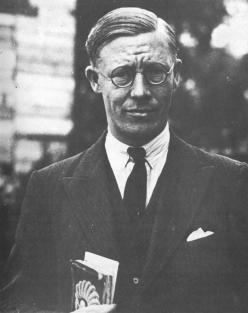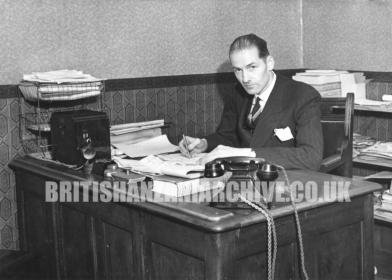
british anzani archive:





In January 1934 AFN
became majority
shareholders of British
Anzani with a view to
having BA make a new
SOHC engine for Frazer
Nash popularly known as
the Gough. He had had
Anzani’s immediately
develop a supercharged
racing version of the
engine and although the
manufacturing never
actually did come their way
the company had entered
yet another new phase of
it’s history.
In 1936 Aldington bought out Burt completely and the company became a fully
integrated member of A.F.N. making a living doing special development work
and race engines for Frazer Nash, engine refurbishments, spares for the old
engines plus their perennial contract work and all was quiet - for the time being
anyway...
A.F.N. at this time were developing their links with the BMW car company and
finding it a very profitable business. This relationship was to become a defining
feature of the company and the Anzani side of the business was left to fend for
itself. The staffing level at this time is thought to have been around 25 people, far
removed from the heady days of the AC contract in the early 1920’s when they
employed over 100 people in the Willesden plant.
Among the directors though was a man who was to have a big influence on
British Anzani for the next 30 years. This man was a motor boat and motor cycle
racer, an ex-world water speed record holder and engine designer - his name
was Charles Henry Harrison.
The company had been slowly failing and in 1938 Charles Henry Harrison
A.M.I.Mech.E., an ex-J.A.P apprentice and keen motorcycle and powerboat
racer, took over as their Chief Designer and Managing Director and moved the
company to their next home in Hampton Hill, Middlesex.
He was previously the technical director of the British Motor Boat Manufacturing
Co. and held two Outboard World Speed records set in 1930 and 1931 when he
was works driver for Elto and Evinrude. He was also Chairman of the British
Outboard Racing Club, owner of Bedfont Lake (a well known racing venue) and
whilst at BMBM had designed the successful Britannia outboard motor. BMBM
were also known for producing funfair equipment (dodgem cars and
roundabouts) which Harrison now brought to British Anzani also. When the
Second World War began British Anzani started development work on a
stationary industrial engine which driving through a flexible underwater unit was
used to propel landing craft and they also did contract work for the Air Ministry.
Meanwhile they designed the Super Single outboard motor and from 1940
supplied 50-60 a month to the Admiralty throughout the war. This successful
design was later sold to the public and was still in production into the late
1970’s.
Over the years they built outboard motors that ranged from ½ hp up to 40 hp
models and included some of the most succesful racing engines of their era and
by 1956 their 344cc Racing Unitwin was the only British built racing outboard left
in production.
The need for additional war time food production required innovative products
and the extremely successful British Anzani Iron Horse two-wheeled tractor was
introduced in 1940.
Advertised as ‘the agricultural machine built with aero engine accuracy’ it was
fitted with a 4 stroke 6hp Anzani/JAP engine giving a top speed of 4 mph. A
centrifugal clutch, three forward gears and reverse and with adjustable track
from 24" to 36", a range of steel wheels, extension rims, pneumatic tyres or
crawler track options meant it really was a machine to tackle any terrain. You
could also purchase a ride-on carriage for the driver turning it into a normal
tractor capable of pulling farm carts with up to a ton load.
A range of accessories increased its functionality with attachments for mowing,
ploughing, spraying, hoeing, crop lifting and harrowing. It also had a
multifunctional belt driven power take-off system which provided farmers with







